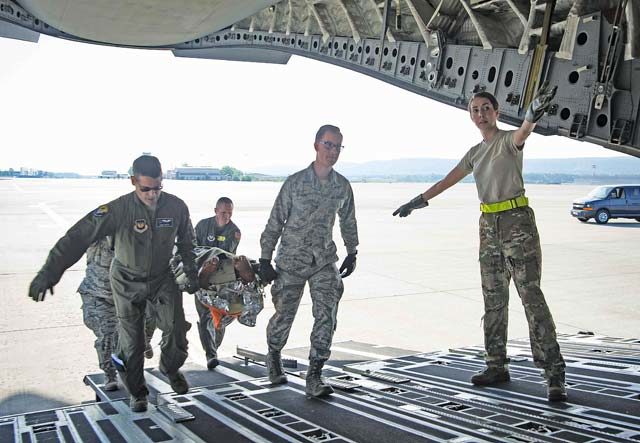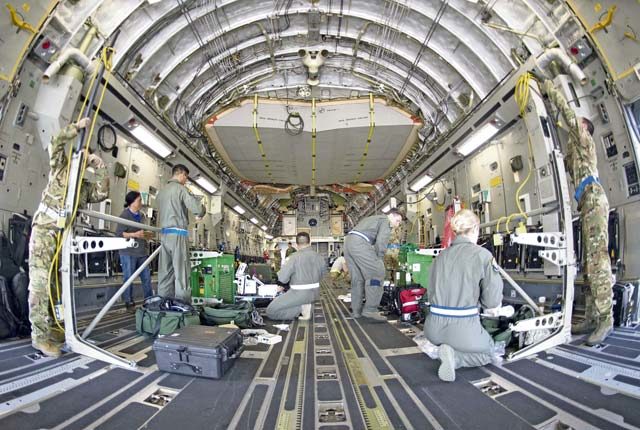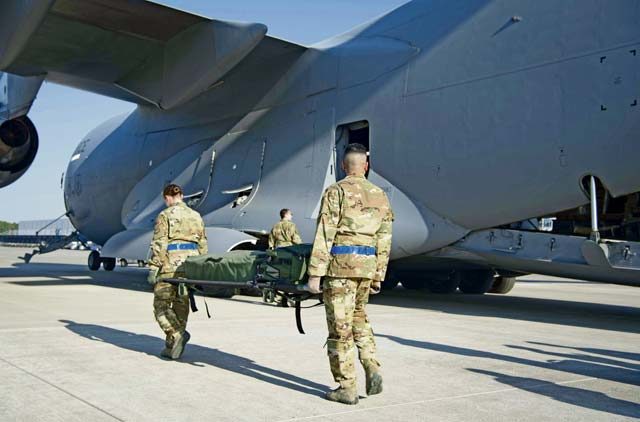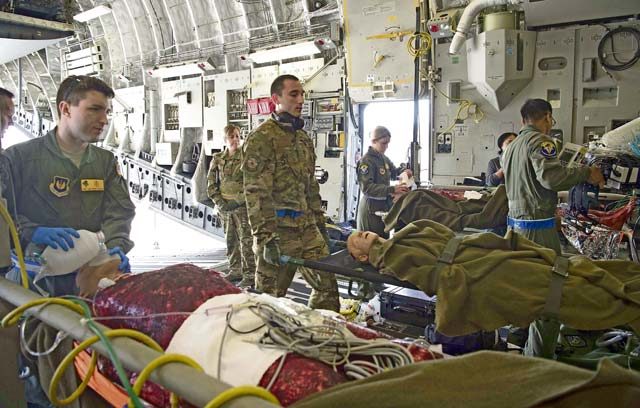
The 86th Medical Squadron is a high-paced squadron that trains constantly and is ready to respond any moment, day or night, to save lives across Europe and Africa. As part of that training, the 86th MDS brought together the Critical Care Air Transport Team, the Aeromedical Evacuation Squadron, and En-Route Patient Staging Flight to each play their parts in a burn victim evacuation exercise.
In the simulation scenario, two severely burned patients had been extracted from a burning building in Africa. The CCAT, AES, and ERPSF were tasked with transporting them to Landstuhl Regional Medical Center.
To add to the realism of training, the 86th MDS uses high-tech mannequins that can mimic human conditions with features such as a simulated pulse, lungs, and heart rate. Nurses can perform such actions as injecting fluids and monitoring vitals. Observers can monitor and control outputs from the mannequins via laptops. For example, an observer can drop the mannequin’s blood pressure and observe the team’s responses.
“This exercise is as close to a real- life mission as we can get,” said Maj. Kirk Smith 86th MDS CCATT critical care nurse. “It starts from the time a CCATT is alerted. We use bare transportation like we would for a real mission to get our team and 700 pounds of equipment to the aircraft.”
Smith said that the exercise incorporates five units and ties all the pieces together like a real mission.
The CCATT and AES teams are both trained to care for patients in-flight. The teams work side-by-side to quickly transform an aircraft into a flying hospital, with equipment such as fluids, oxygen machines, and stanchion litter systems. The CCATT teams specialize in critical care patients, while AES handles non-critical patients, and installs and connects equipment to the aircraft. The ERPSF handles transportation to and from the aircraft.
Smith explained that CCATTs often do simulation training in the lab and work in the hospital, but this training covers more.
“This training is so important for CCATTs because it’s not just the medical part we get to train on but also the setup of the aircraft, experience of working closely with Aeromedical Evacuation Airmen, the unique transport of the patient not just on the plane but on the ambulance bus with the ERPSF, and lastly the handoff of a patient to the intensive care unit at Landstuhl Regional Medical Center,” Smith said.
Smith said that the dangerous part of transporting patients is not found in lab settings or in the air.
“A lot of times the most dangerous part is when you’re transporting the patient from the intensive care unit to the bus, from the bus to the aircraft, and back onto the bus and to the ICU,” Smith said. “You have so many moving parts, all your lines are hanging out. There’s a lot of moving pieces, and that’s when you have to be the most vigilant with the patient.”

These dangerous parts of transport are part of why realistic exercises are so important.
Through consistent training in realistic scenarios, the 86th MDS remains vigilant and ready to accomplish its mission of delivering professional, reliable, innovative care, whether in the air or on the ground.




